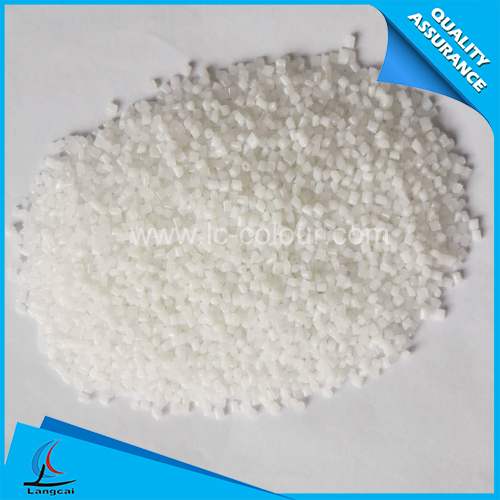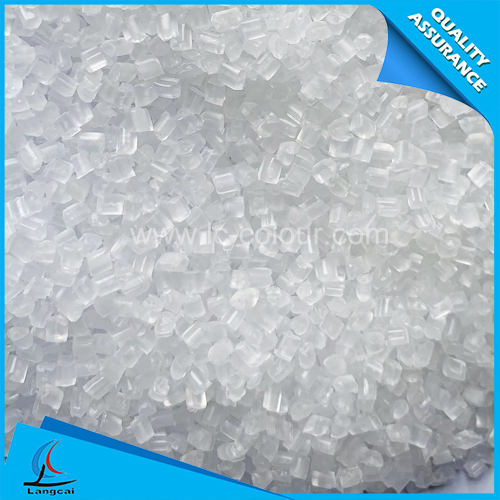- Nonwoven Fabrics
- Tailor Made Masterbatch
- Plastic Masterbatch
- Chemical Fiber Masterbatch
- Functional Masterbatch
- Machinery
- Spunbond PP Nonwoven Masterbatch
- Mono Color Masterbatch
- Liquid Color Masterbatch
- Non-woven Masterbatch
- Polyester Fiber Masterbatch
- Nylon Fiber Masterbatch
- Polypropylene Fiber Masterbatch
- Lab Nonwoven Machine
- Lab BCF Machine
- Dryer
- Filler Masterbatch
- The 2025 International Textile Innovation Conference will be held in Keqiao, Shaoxing on November 5th
- Unveiling the core components of Mono Color Masterbatches!
- Why choose Mono Color Masterbatches? The four core advantages are irreplaceable
- The adjustment of the global industrial chain has forced the upgrading of the risk prevention and control model
- What is a Complex masterbatch? What are the outstanding advantages?
- With weak US cotton and increased domestic supply, can the upward trend continue in the future?
- Phone:00836 - +86-535-8484358
- Email:wendy@ytlc-colour.com
- Address:DALAN INDUSTRIAL PARK, ZHANGXING TOWN, ZHAOYUAN CITY, SHANDONG, CHINA
According to the General Administration of Customs statistics today, from January to October this year, the national textile and apparel exports were 245.72 billion US dollars, down 9.2% (in renminbi terms, down 3.4%), and the decline continued to narrow by 0.3 percentage points compared with the first three quarters. Among them, textile exports were 112.55 billion US dollars, down 9.8% year-on-year (down 3.9% year-on-year in RMB); Garment exports were US $133.16 billion, down 8.7% year-on-year (down 3.1% year-on-year in RMB terms).
In October, China's textile and apparel exports to the world were 22.97 billion US dollars, down 4.8% year-on-year (down 1.5% in RMB terms). Among them, textile exports were US $10.71 billion, down 3.3% year-on-year (a slight increase of 0.1% in RMB terms); Garment exports were US $12.26 billion, down 6.0% year-on-year (2.9% year-on-year in RMB terms), down 0.6 percentage points from the previous month.
At present, the world economic growth is slowing down, the global textile supply chain is deeply adjusted, and the development of foreign trade in the industry is under pressure. In the first three quarters of this year, China's textile and apparel exports to the three traditional markets of the United States, the European Union and Japan fell by 15.6%, 20.5% and 12.3%, respectively. However, at the same time, in the process of actively promoting the development of the "Belt and Road" in China and various partner countries, benefiting from the continuous optimization of the environment and the smooth and convenient channels, the export scale of China's textile and apparel to some countries along the "Belt and Road" continues to expand. From January to September this year, China's textile and apparel exports to Russia, Kazakhstan, Singapore and other countries increased by 20.4%, 52.4% and 24.9%, respectively. It is suggested that foreign trade enterprises in the industry actively grasp the historic opportunity of high-quality co-construction of the "Belt and Road" into a new stage, explore diversified international markets, and strive to create more trade increment.
Strong expectations and weak reality
Under the influence of factors such as the continued downturn in international market demand and the gradual decline in domestic cost advantages, the recovery of production and sales and exports of China's textile and garment industry has encountered numerous obstacles, and the contradiction between "strong expectations and weak reality" is more prominent.
From the feedback of some cotton spinning enterprises in Shandong, Jiangsu, Hubei and other places, since late October, the ex-factory price of cotton yarn has generally been reduced by more than 1000 yuan/ton, of which OE yarn and high comb/combed yarn callback range is slightly lower, C16-C40 ring spinning/tight spinning yarn quotation has been reduced slightly, but the immediate profit of textile enterprises is still improved.
Insufficient new orders
At present, the biggest problem encountered by enterprises is the lack of new orders, the workshop opening rate is difficult to maintain at a normal level, the yarn accumulation rate continues to rise, and the cash flow is gradually tightening, although the cotton yarn traders have taken more substantial measures to yield profits under the impact of the cotton yarn traders' price reduction and a large number of cotton yarn imports, but the effect is not obvious.
A medium-sized cotton mill in Zibo, Shandong province, said that according to the current cash flow, yarn inventory and expectations for the future, if the new orders are limited before mid-December, can only reduce production or even stage production. For the adjustment of equipment and process spinning blended yarn, chemical fiber yarn, the company believes that on the one hand, the output of the blended yarn market has been in a "supersaturated" state, the difficulty of developing the market is self-evident; On the other hand, there is still a long way to go for the recovery of textile and clothing consumer markets in Europe, the United States and Japan, and the short-term stabilization and rebound pressure of blended and chemical fiber fabrics and clothing exports.
From the survey, the proportion of some cotton textile enterprises in the mainland to reduce production is expected to be higher than the same period in 2022, and a few enterprises even entered the Spring Festival holiday in advance, and the cotton consumption boom may further deteriorate.
- Unveiling the core components of Mono Color Masterbatches!
- The 2025 International Textile Innovation Conference will be held in Keqiao, Shaoxing on N
- Why choose Mono Color Masterbatches? The four core advantages are irreplaceable
- The adjustment of the global industrial chain has forced the upgrading of the risk prevent
- What is a Complex masterbatch? What are the outstanding advantages?
- With weak US cotton and increased domestic supply, can the upward trend continue in the fu
- Yantai Liangcai Plastic Technology Co., Ltd. specializes in the production of Monochromati
- The predicament of Sino-US trade and exchange rate fluctuations
- Yantai Liangcai empowers the new future of fiber colors with high-quality polyester fiber
- What impact will the implementation of the Federal Reserve's interest rate cut have on the


